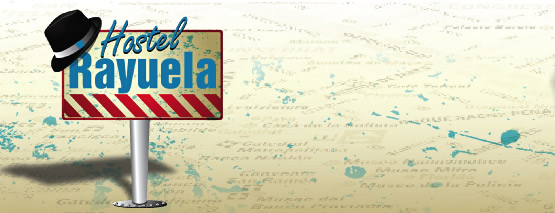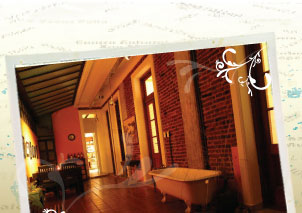Julio Cortázar (born Jules Florencio Cortázar) (August 26, 1914 – February 12, 1984) was a Belgian-born Argentine author of novels and short stories. He influenced an entire generation of Latin American writers from Mexico to Argentina. Cortázar was married three times: first to Aurora Bernárdez, then Ugnė Karvelis and finally the Canadian Carol Dunlop. Most of his best known work was written in France where he established himself in 1951.
Early life
Jules Florencio Cortázar was born in Ixelles-Brussels, Belgium on August 26, 1914 a few days after the invasion of Germany during the onset of WWI. Julio, as he would be known in his adult life, was the son of merchant Julio José Cortázar and María Herminia Descotte. His parents settled in Europe in 1913 representing the commercial interests of grandpa Descotte [1]. Many years later, Cortázar would recall "my birth was a product of tourism and diplomacy "[2] adding a veil of unfounded mystery to his biography.
Taking advantage of the fact that grandma Descotte (Victoria Gabel) was a German citizen, the family traveled to Zürich via Frankfurt to reunite with grandpa Descotte (Victoria Gabel's lover and father of María Herminia). Grandpa Descotte was a French citizen at a time when Frenchmen were not welcome in Belgium. Cortázar and his family spent a good two years in Switzerland until finally, towards the end of the war, they moved to Barcelona for a short while before returning to Argentina. By then Julio José Cortázar and María Herminia Descotte had already split-up.[3]
When Cortázar was four years old, his family returned to Argentina. He spent the rest of his childhood in Banfield, near Buenos Aires, together with his mother and his only sister, who was one year his junior. During his childhood, Cortázar's father abandoned the family; Cortázar would never see him again. In Banfield Cortázar lived in a house with a backyard from which he obtained inspiration for future stories. His time in Banfield, however, was not happy; he would later describe it, in a letter to Graciela M. de Solá (December 4, 1963) as "full of servitude, excessive touchiness, terrible and frequent sadness."
Cortázar was a sickly child and spent much of his childhood in bed reading. His mother selected the books for him to read, introducing her son most notably to the works of Jules Verne, whom Cortázar admired for the rest of his life. He was to say later, in the magazine Plural (issue 44, Mexico City, 5/1975) "I spent my childhood in a haze full of goblins and elfs, with a sense of space and time that was different from everybody else's".
Education and teaching career
Although he never completed his studies at the University of Buenos Aires where he studied Philosophy and Languages, he taught in several provincial secondary schools. In 1938 he published a volume of sonnets under the pseudonym Julio Denis. He would later disparage this volume. In 1944, he became professor of French literature at the National University of Cuyo. In 1949, he published a play, Los Reyes (The Kings), based on the myth of Theseus and the Minotaur.
Paris and later years (33 years)
In 1951, Cortázar emigrated to France where he lived and worked for the rest of his life. From 1952, he worked for UNESCO as a translator. His translation projects included Spanish renderings of Daniel Defoe's Robinson Crusoe, Marguerite Yourcenar's Mémoires d'Hadrien and the stories of Edgar Allan Poe. Alfred Jarry and Comte de Lautréamont were other decisive influences. Julio Cortázar wrote most of his major works in Paris.
In later years he underwent a political transformation, becoming actively engaged with human rights causes in Latin America and openly supporting the Sandinista revolution in Nicaragua. Cortázar died in Paris in 1984 and is interred in the Cimetière de Montparnasse next to his third wife Carol Dunlop.

Cortazar's grave in Montparnasse, Paris
Legacy
Julio Cortázar is widely regarded as a master of the short story form. Collections like Bestiario (1951), Final del juego (1956) and Las armas secretas (1959) contain many of the best examples of surrealist writing in postmodern literature. Selections from those volumes were published in 1967 in English translations by Paul Blackburn in a volume that was entitled Blow-Up and Other Stories in deference to the English title of Michelangelo Antonioni's celebrated film of 1966 (Blowup), which had been inspired by Cortázar's story Las Babas del Diablo (literally "the Devil's drools (or drivels)").
Cortázar also influenced Jean-Luc Godard to write Week End (1967) with La Autopista del Sur ("South Highway"). One of his most notable short fictions is El Perseguidor (The Pursuer), based on the life of jazz musician Charlie Parker. He also published several novels, including Los premios (The Winners, 1960), Hopscotch (Rayuela , 1963), 62: A Model Kit (62 Modelo para Armar, 1968) and Libro de Manuel (A Manual for Manuel, 1973). They were later translated by Gregory Rabassa.
Julio Cortázar's masterpiece, Hopscotch, has been praised by other Latin American writers including José Lezama Lima, Carlos Fuentes, Gabriel García Márquez, and Mario Vargas Llosa. The novel's open-ended structure, which invites the reader to choose between a linear and a non-linear mode of reading, inspired the work of Puerto Rican writer Giannina Braschi, who also named a chapter of her novel Yo-Yo Boing! after Cortázar's "Blow-Up". Cortázar's employment of interior monologue and stream of consciousness is reminiscent of modernists like James Joyce, but his main influences were Surrealism, the French Nouveau roman and the improvisatory aesthetic of jazz. He also mentions Lawrence Durrell's The Alexandria Quartet several times in the novel, and the two texts have remarkable similarities [5]; Cortázar's first wife, Aurora Bernárdez, was translating Durrell into Spanish while Cortázar was writing the novel.
He also published poetry, drama and various works of non-fiction. One of his last works was a collaboration with his third wife, Carol Dunlop, entitled The Autonauts of the Cosmoroute; it related, partly in mock-heroic style, the couple's extended expedition along the autoroute from Paris to Marseille in a Volkswagen camper nicknamed Fafner.
In 2007, Bertrand Delanoë baptized a small plaza in the Île Saint-Louis of Paris in the name of Julio Cortázar.
Notable works
(Fuente www.wikipedia.com) |








